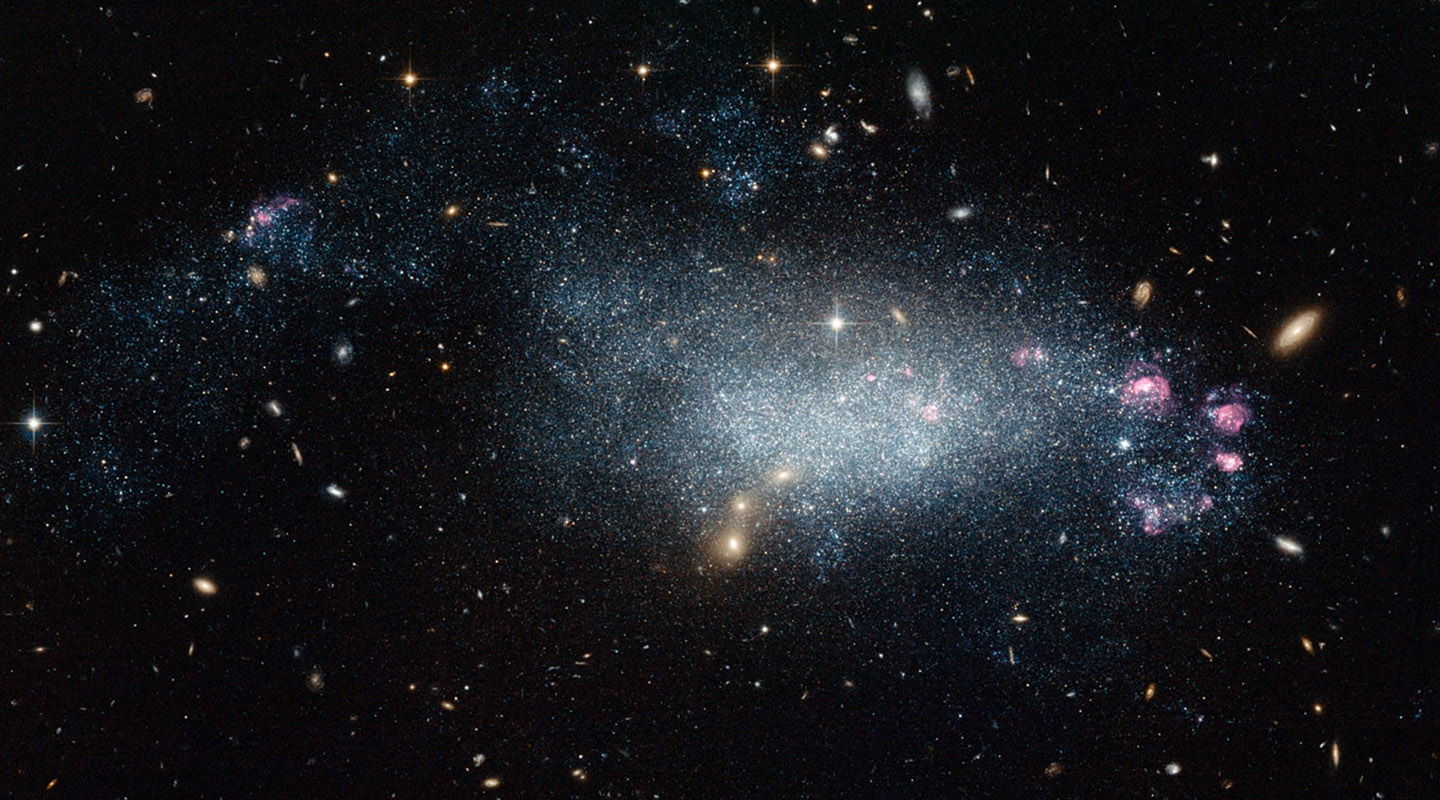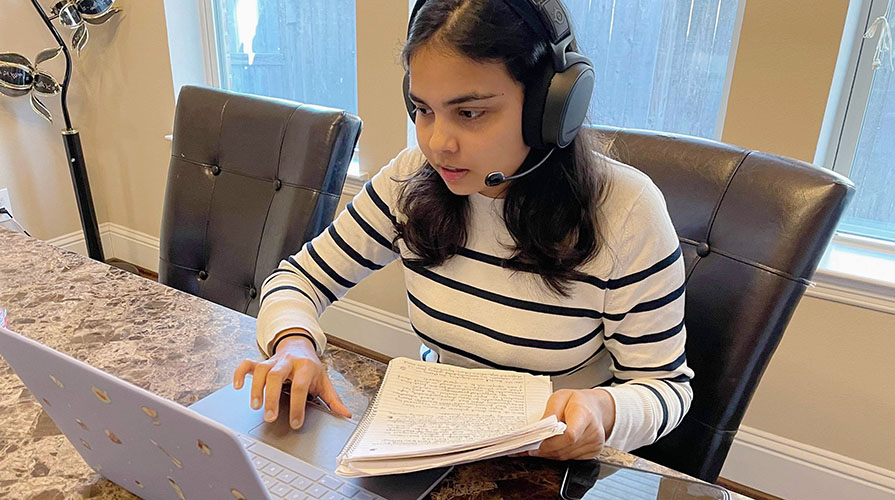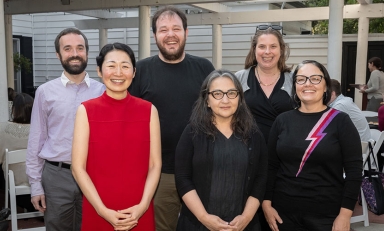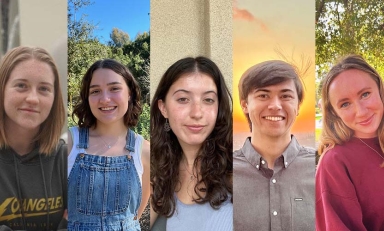Tehreem Hai ’23 attended the virtual conference this January to share her research on merging galaxies and super star clusters with more than 3,000 other scientists.
Top image: This NASA-ESA/Hubble Space Telescope image shows dwarf galaxy DDO 68, similar to the ones Tehreem is studying.
When a new star makes its debut, it’s usually born together with other stars in what scientists refer to as clusters. Bigger galaxies usually form bigger clusters, explains Assistant Professor of Physics Sabrina Stierwalt, but it’s not unusual for astronomers to find dwarf galaxies with unexpectedly large clusters. Containing around 100,000 sun-like stars, they are called super star clusters. How such small galaxies form such large super star clusters is a mystery.
Last year, sophomore physics major Tehreem Hai made this mystery the focus of her research as a participant in the Undergraduate Research Center’s 2020 Summer Research Program (SRP).
“To find out more about these clusters—and other things which dwarfs might have common with larger galaxy mergers—we needed better data,” she says. “That's where Hubble came in.”
Hai analyzed high resolution images from the Hubble Space Telescope to characterize the star populations of nearby galaxies. By zeroing in on the properties of star clusters in merging galaxies, her research asks whether collisions with other galaxies have a role in the formation of super star clusters.
After identifying star clusters in the Hubble images, Hai measured their brightness and color. Next she will compare them to stellar population models to estimate the clusters’ age and mass. According to Stierwalt, her research mentor, Hai’s analysis has already shown that one of the galaxies likely had a recent burst of star formation, long after the galaxy's initial formation.
“I am so impressed with all that Tehreem has been able to accomplish given our shortened, remote summer research program,” Stierwalt says. “In her sophomore year, Tehreem is already a driving member of the Oxy Galaxy Group.”
“The importance of presenting research and the possibility that we would present ours was emphasized from the very beginning,” Hai says. “So when Professor Stierwalt asked me at the end of the SRP if I wanted to present at the winter American Astronomical Society meeting, I immediately said yes.”
AAS is the largest professional society for astrophysicists in the United States, attracting more than 3,000 scientists. Hai says that while it felt gratifying to be treated like a scientist and have people interested in her work and process, she made it her responsibility as a communicator to make the information accessible to different audiences.
“The people who asked me questions came from very different fields even within astronomy, and had varying levels of knowledge about my subject.”
“Tehreem had a depth of knowledge to navigate smoothly between high-level discussions of the material to explanations fit for a more general audience,” Stierwalt says. “She made it look easy!”
Next up? Hai will be comparing her results to Hubble images of galaxies that are not undergoing a merger to look for differences. Their research group plans to submit the results for publication next year.
“Explaining the bigger picture and goals of the project to multiple people at the conference gave me greater clarity on the future directions this work will take,” Hai says, “something I am looking forward to!”





